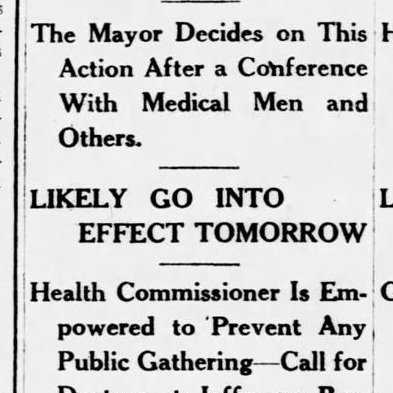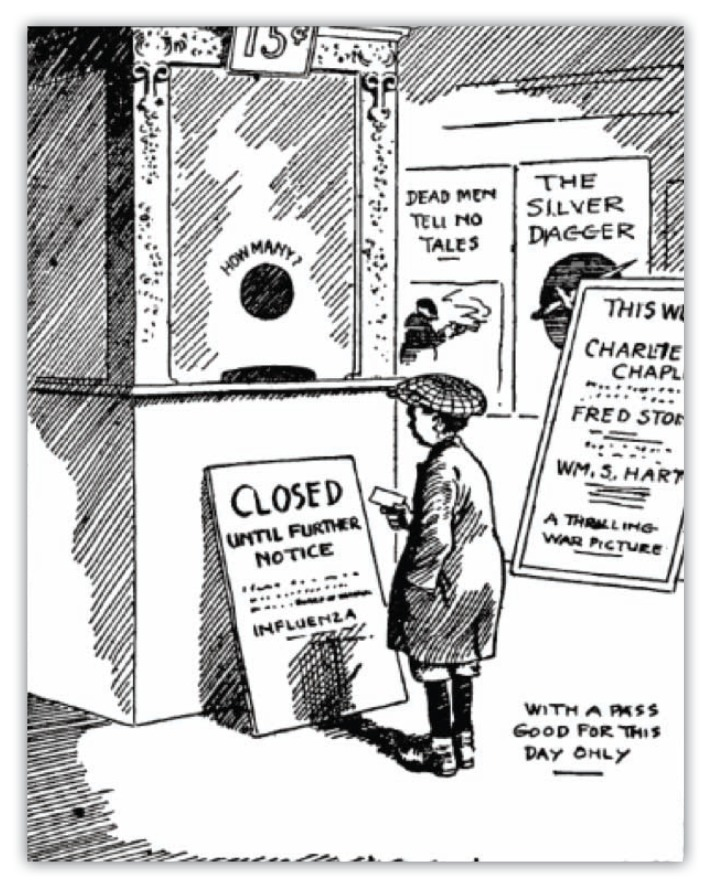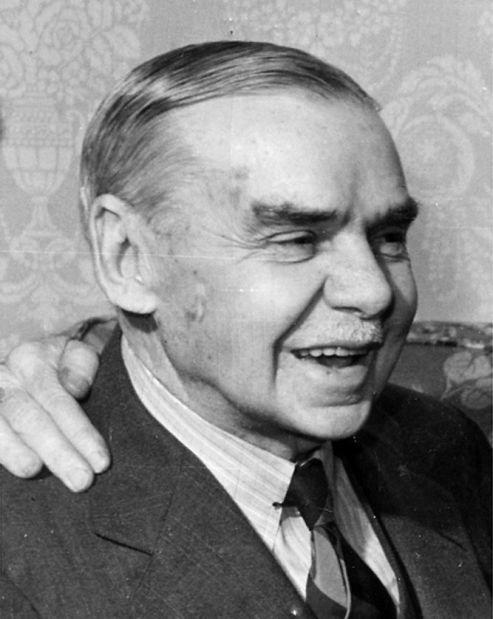1/ Dr. Max Starkloff was a hero who saved countless lives in St. Louis during the Spanish flu pandemic. City governments today ought to follow his example to mitigate the impact of #COVID19.
2/ Starkloff was the city health commissioner of St. Louis. In October 1918, St. Louis had its first 7 cases. Two days later, Starkloff abruptly ordered the closure of ALL schools, movie theaters, bars, sporting events, religious services, playgrounds, and other public places.
3/ It was a bold move, just two days after the first cases were identified. The mayor backed Starkloff and gave him legal authority to make public health edicts.
City residents had one day to prepare.
City residents had one day to prepare.
4/ St. Louis was the only city in the country to react so swiftly and aggressively. Many in St. Louis initially thought that Starkloff was overreacting. Theater owners protested. There were angry letters to the editor.
6/ St. Louis's 7 initial cases quickly grew into hundreds, and then thousands. Starkloff responded by expanding the closures to include most businesses except for banks, newspapers, embalmers, and coffin-makers.
7/ People were furious. Presidents of major companies made statements denouncing Starkloff. The pressure was immense, but he didn't back down.
8/ Corporate St. Louis's 1918 objections to Starkloff offers fascinating insight into America's obsession with productivity at all costs and our suspicion of leisure.
"The public would be better off at work than with time on their hands." - Pres. of Associated Retailers
"The public would be better off at work than with time on their hands." - Pres. of Associated Retailers
9/ Frank Rand, president of the International Shoe Company, said that people at work "would have less time to worry about the epidemic."
The cognitive dissonance is unmistakeable looking back on 1918 with hindsight. But to people then, these objections seemed reasonable.
The cognitive dissonance is unmistakeable looking back on 1918 with hindsight. But to people then, these objections seemed reasonable.
10/ But Starkloff never backed down. He instructed his deputies to assert that "the lives of the people should be considered first and the business and money interests of the city later."
City officials, it's time to #BeLikeStarkloff
City officials, it's time to #BeLikeStarkloff
11/ So in October 1918, St. Louis adopted the following resolution:
"It is felt that drastic measures over a short period will inevitably shorten the length of time that will be necessary to stamp out this deadly disease.
"It is felt that drastic measures over a short period will inevitably shorten the length of time that will be necessary to stamp out this deadly disease.
12/ "The disease has not raged here with the same intensity as in other communities where tardy or inadequate preventative measures were taken..."
13/ "There still remain a large number of persons susceptible to the disease in this city, and it is the purpose of the more rigid restrictions to protect them."
14/ "It is therefore resolved, that this committee unhesitatingly endorse the decision of the health commission to close all activities, with certain unavoidable exceptions."
If St. Louis did this in 1918, we can do it in cities across America now and #FlattenTheCurve.
If St. Louis did this in 1918, we can do it in cities across America now and #FlattenTheCurve.
15/ Starkloff's measures lasted about two months and had a dramatic impact on the impact of the pandemic on St. Louis.
St. Louis ended up with the lowest mortality rate of any major US city.
St. Louis ended up with the lowest mortality rate of any major US city.

 Read on Twitter
Read on Twitter




